Plastic surgery represents a significant investment in your appearance and confidence. Understanding the complete financial picture, from surgical fees to hidden costs, can be challenging for prospective patients. This guide provides transparent pricing data, risk assessment, and recovery expectations for the most popular cosmetic procedures.
✓ Complete cost breakdowns for 15+ surgical and non-surgical procedures
✓ Geographic price variations across US regions and European countries
✓ Risk assessment factors that impact surgical safety and outcomes
✓ Recovery timelines and what to expect during healing phases
✓ Financing options and strategies to manage procedure costs
✓ Surgeon selection criteria to ensure qualified care
✓ Before and after care recommendations for optimal results
Plastic Surgery Cost, Risk & Recovery Calculator
Assess your procedure’s estimated costs, risks, and recovery timeline
Demographics
Medical History
Surgery Details
Your Results
Overall Surgery Risk Score
Estimated Costs
Calculating…
Recovery Time
Calculating…
Interpretation
Based on your inputs, we’re calculating your personalized assessment…
Recommendations
- Your personalized recommendations will appear here
Disclaimer: This calculator provides estimates only and is not a substitute for professional medical advice. Actual costs, risks, and recovery times may vary based on individual circumstances. Consult with a qualified plastic surgeon for personalized assessment.
Read More Guides & Try More Free Tools:
- Try our Chin Reduction: Surgery And Non-Surgical Contouring
- Try our Bodytite Cost: RFAL Skin Tightening Price Guide
- Try our Lip Filler Prices Near Me: Juvederm vs. Restylane

Table Of Contents
What Factors Determine Plastic Surgery Costs?
Plastic surgery pricing varies significantly based on multiple factors that patients should understand before consulting with surgeons. The total cost encompasses far more than just the surgeon's fee, including anesthesia, facility costs, medical tests, garments, medications, and follow-up care. Geographic location plays a crucial role, with major metropolitan areas typically commanding higher prices than suburban or rural practices.
The complexity of the procedure directly impacts both duration and cost, with revision surgeries often costing substantially more than primary procedures. Surgeon expertise and reputation also contribute to pricing variations, with board-certified plastic surgeons typically charging more due to their specialized training and experience.
How Does Procedure Type Influence Plastic Surgery Pricing?
Different plastic surgery procedures carry vastly different price tags based on their complexity, duration, and the expertise required. Surgical procedures generally cost significantly more than non-surgical treatments, though multiple non-surgical sessions can approach the cost of surgery over time.
✓ Surgical procedures involve anesthesia, facility fees, and longer recovery
✓ Minimally-invasive treatments typically have lower upfront costs but may require maintenance
✓ Combination procedures often provide cost savings compared to separate surgeries
✓ Revision surgeries typically cost more due to increased complexity
What Role Does Geographic Location Play in Cost Variations?
Plastic surgery costs demonstrate substantial regional variations both within the United States and internationally. Understanding these geographic pricing patterns can help patients make informed decisions about where to pursue their procedures.
United States Regional Pricing Trends:
- Northeast (New York, Boston): 15-25% above national average
- West Coast (California, Washington): 10-20% above national average
- Midwest (Ohio, Illinois): At or slightly below national average
- South (Texas, Florida): 5-15% below national average
European Country Cost Comparisons:
- United Kingdom: Prices similar to US Midwest averages
- Germany: Premium pricing for specialized procedures
- Poland, Czech Republic: Significant cost savings (30-50% less than US)
- Turkey: Emerging destination with competitive pricing
How Much Do Common Plastic Surgery Procedures Cost?
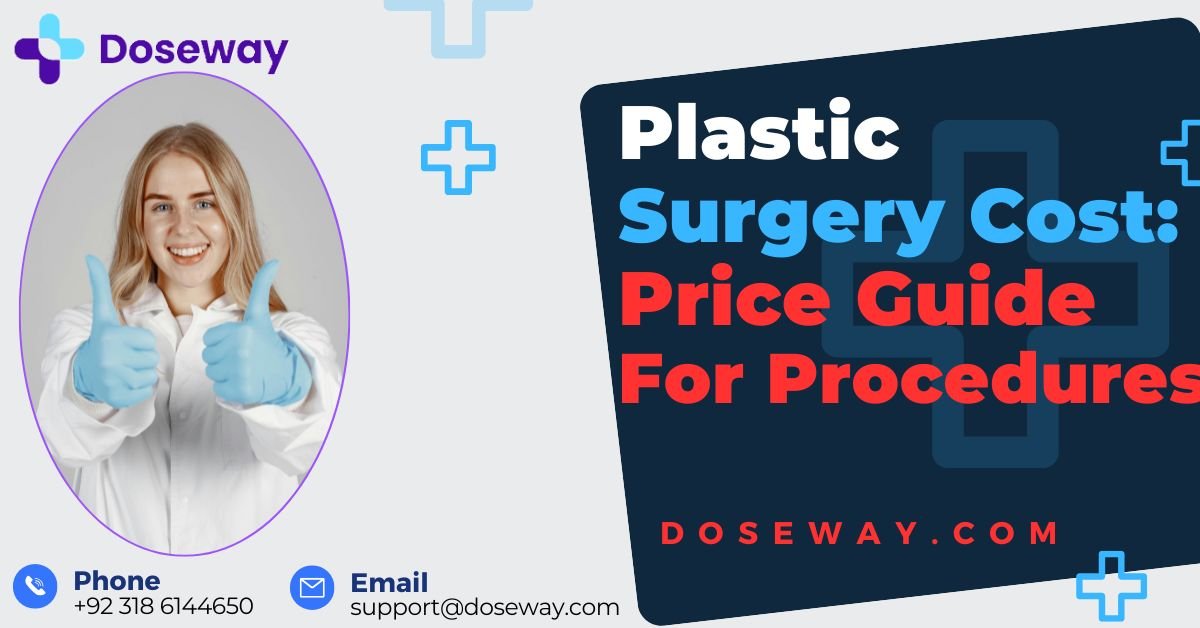
Understanding current market rates for popular plastic surgery procedures helps patients budget appropriately and recognize fair pricing. The following breakdown reflects 2024 averages for surgeon fees alone, with additional costs for anesthesia, facility fees, and other expenses typically adding 30-60% to the total.
What Are the Current Prices for Facial Procedures?
Facial plastic surgery encompasses both surgical and non-surgical approaches to rejuvenation and enhancement. Pricing varies based on technique, anesthesia requirements, and surgeon expertise.
Rhinoplasty (Nose Surgery)
- Surgeon's fee: $5,500 - $12,000
- Total cost: $7,000 - $15,000
- Revision rhinoplasty: $8,000 - $20,000
Facelift (Rhytidectomy)
- Surgeon's fee: $7,500 - $15,000
- Total cost: $10,000 - $20,000
- Mini facelift: $5,000 - $9,000
Eyelid Surgery (Blepharoplasty)
- Upper eyelids: $3,000 - $6,000
- Lower eyelids: $4,000 - $7,000
- Combined procedure: $6,000 - $12,000
What Is the Pricing for Breast Procedures?
Breast procedures remain among the most popular plastic surgeries, with costs influenced by implant type, technique, and procedure complexity.
Breast Augmentation
- Surgeon's fee: $4,000 - $8,000
- Total cost: $6,000 - $12,000
- Saline implants: $1,000 - $2,000
- Silicone implants: $2,000 - $4,000
Breast Reduction
- Surgeon's fee: $5,500 - $10,000
- Total cost: $8,000 - $15,000
Breast Lift (Mastopexy)
- Surgeon's fee: $4,500 - $8,000
- Total cost: $6,500 - $12,000
- With implants: $8,000 - $15,000
What Are the Costs for Body Contouring Procedures?
Body contouring procedures address stubborn fat and skin laxity through various surgical techniques with corresponding price variations.
Tummy Tuck (Abdominoplasty)
- Mini tummy tuck: $4,000 - $8,000
- Full tummy tuck: $6,000 - $12,000
- Extended tummy tuck: $9,000 - $15,000
Liposuction
- Small area (chin, knees): $2,000 - $4,500
- Medium area (neck, arms): $3,000 - $6,000
- Large area (abdomen, thighs): $4,500 - $9,000
- Multiple areas: $7,000 - $15,000
Body Lift Procedures
- Lower body lift: $8,000 - $16,000
- Arm lift (Brachioplasty): $4,000 - $8,000
- Thigh lift: $5,000 - $9,000
How Do Patient Factors Influence Surgical Risks and Outcomes?
Individual patient characteristics significantly impact both surgical safety and final results. Understanding these factors helps patients and surgeons develop appropriate treatment plans and set realistic expectations.
What Medical Conditions Increase Plastic Surgery Risks?
Certain pre-existing health conditions can elevate surgical risks and complicate recovery. Board-certified plastic surgeons carefully evaluate these factors during patient consultations.
✓ Diabetes can impair wound healing and increase infection risk
✓ Hypertension may increase bleeding complications during and after surgery
✓ Autoimmune disorders can affect healing and final outcomes
✓ Smoking significantly compromises blood flow and tissue healing
✓ Obesity increases anesthesia risks and surgical complications
How Does Age Impact Surgical Safety and Recovery?
Age influences surgical risk profiles, healing capacity, and aesthetic outcomes. While chronological age matters, biological age and overall health status often provide better indicators of surgical suitability.
Patients Under 30:
- Generally faster recovery times
- Better skin elasticity and healing capacity
- Lower risk of anesthesia complications
Patients 30-50:
- Good surgical candidates with healthy habits
- May require combined procedures for optimal results
- Stable results with proper maintenance
Patients Over 50:
- May have slower recovery periods
- Increased consideration of medical comorbidities
- Possible need for more extensive procedures

What Does the Plastic Surgery Recovery Process Involve?
Understanding the recovery process helps patients prepare appropriately and set realistic expectations for their postoperative experience. Recovery varies significantly by procedure type and individual healing capacity.
What Is the Typical Timeline for Recovery After Common Procedures?
Each plastic surgery procedure follows a distinct recovery trajectory with specific milestones and activity restrictions.
Facial Procedure Recovery:
- Week 1: Significant swelling and bruising, pain manageable with medication
- Weeks 2-3: Majority of swelling resolves, return to sedentary work possible
- Months 1-3: Residual swelling decreases, final results emerging
- 6-12 months: Final results apparent
Body Contouring Recovery:
- Weeks 1-2: Limited mobility, surgical drains may be present
- Weeks 3-6: Gradual return to light activities, compression garments worn
- Months 2-4: Return to most activities except heavy exercise
- 6 months: Final contour established
How Can Patients Optimize Their Healing Process?
Proactive recovery strategies can significantly improve healing outcomes and patient satisfaction with surgical results.
✓ Follow all postoperative instructions precisely regarding wound care and activity restrictions
✓ Maintain proper nutrition with adequate protein, vitamins, and hydration
✓ Use recommended compression garments as directed to control swelling
✓ Attend all follow-up appointments for proper monitoring of healing progress
✓ Avoid smoking and alcohol during the recovery period
✓ Manage pain effectively to enable appropriate mobility and breathing
What Are the Hidden Costs of Plastic Surgery?
Many patients underestimate the total financial investment required for plastic surgery by focusing solely on surgeon fees. Understanding the complete cost picture prevents unexpected financial stress.
What Additional Expenses Should Patients Anticipate?
Beyond the surgeon's fee, multiple other costs contribute to the total financial investment in plastic surgery.
Medical Fees:
- Anesthesia fees: $800 - $2,500 per procedure
- Facility/surgical center fees: $1,000 - $3,000
- Medical tests and laboratory work: $200 - $800
Postoperative Costs:
- Prescription medications: $100 - $300
- Surgical garments: $100 - $400
- Follow-up care and potential revisions: Varies
Indirect Costs:
- Time off work: 1-4 weeks depending on procedure
- Caregiver assistance: First 24-72 hours typically required
- Transportation to appointments: Multiple visits required
How Much Should Patients Budget for Revision Surgery?
While most plastic surgery procedures provide satisfactory results, some patients require or desire revision surgery to address complications or refine outcomes.
✓ Revision rates vary by procedure from 5-15%
✓ Surgeon policies differ regarding revision costs
✓ Timing considerations typically require waiting 6-12 months
✓ Cost expectations often 20-50% of original procedure price
How Does Surgeon Selection Impact Cost and Quality?
Choosing a qualified plastic surgeon represents one of the most critical decisions in the process, with significant implications for safety, results, and cost-effectiveness.
What Credentials Indicate a Qualified Plastic Surgeon?
Board certification represents the primary indicator of surgical training and competence in specific specialties.
Essential Credentials:
- Board certification by the American Board of Plastic Surgery
- Hospital privileges at accredited facilities
- Membership in professional societies like ASPS or ASAPS
- State medical license in good standing
Red Flags to Avoid:
- Discounted pricing that seems too good to be true
- Pressure to make quick decisions
- Lack of before/after photos
- Unwillingness to discuss risks and complications
How Much Does Surgeon Experience Affect Pricing?
Surgeon experience, reputation, and demand significantly influence fee structures, with top surgeons typically commanding premium prices.
Surgeon Tier Pricing:
- Newly practicing surgeons: 20-30% below market average
- Established board-certified surgeons: Market rate pricing
- Renowned specialists and academic leaders: 25-50% above market

What Financing Options Exist for Plastic Surgery?
Most plastic surgery represents an out-of-pocket expense, making financing an important consideration for many patients. Understanding available options helps make procedures more accessible.
What Medical Financing Companies Offer Competitive Rates?
Several specialized medical financing companies provide loans specifically for elective procedures with various term structures.
Popular Medical Financing Options:
- CareCredit: Offers promotional no-interest periods
- Alphaeon Credit: Focused on aesthetic procedures
- United Medical Credit: Works with multiple lenders
- PatientFi: Comprehensive payment solutions
What Strategies Help Patients Save for Plastic Surgery?
Strategic financial planning can make plastic surgery more affordable without compromising safety or quality.
✓ Open a dedicated savings account specifically for procedure costs
✓ Utilize health savings accounts (HSAs) for tax advantages
✓ Consider combination procedures to save on facility and anesthesia fees
✓ Explore seasonal specials offered by some practices
✓ Inquire about cash payment discounts which some practices offer
How Do Non-Surgical Alternatives Compare Cost-Wise?
Non-surgical aesthetic treatments provide alternatives to traditional surgery with different cost structures, recovery requirements, and result longevity.
What Are the Costs of Popular Injectable Treatments?
Injectable treatments offer minimal downtime with temporary results requiring maintenance.
Neurotoxins (Botox, Dysport, Xeomin):
- Per unit: $10 - $20
- Average treatment: $300 - $800
- Duration: 3-6 months
Dermal Fillers:
- Per syringe: $600 - $1,200
- Treatment frequency: 6-24 months
- Common areas: Lips, cheeks, nasolabial folds
How Much Do Energy-Based Skin Treatments Cost?
Non-surgical skin tightening and fat reduction technologies provide incremental improvements with multiple sessions typically required.
Laser Skin Resurfacing:
- Fractional laser: $1,500 - $4,000 per treatment
- Full field laser: $2,000 - $5,000 per treatment
- Sessions needed: 1-3 typically
Non-Surgical Fat Reduction:
- CoolSculpting: $750 - $1,500 per area
- SculpSure: $1,000 - $2,000 per area
- Sessions needed: 1-3 for optimal results

What Are the Emerging Trends in Plastic Surgery Pricing?
The plastic surgery industry continues to evolve with new technologies, techniques, and economic factors influencing pricing structures and patient options.
How Is Technology Changing Cost Structures?
Advanced surgical technologies and techniques impact both procedure pricing and patient experience.
✓ 3D imaging systems allow better surgical planning and expectation management
✓ Enhanced recovery protocols may reduce facility costs through outpatient approaches
✓ Minimally invasive techniques can decrease recovery time and indirect costs
✓ Regenerative medicine including stem cells and PRP adds new cost components
What Economic Factors Influence Plastic Surgery Pricing?
Broader economic conditions impact disposable income, financing availability, and practice overhead costs.
Influential Economic Factors:
- Disposable income levels and consumer confidence
- Medical inflation exceeding general inflation rates
- Insurance coverage changes affecting related procedures
- International medical tourism creating pricing pressure
How Can Patients Use Cost Calculators Effectively?
Online plastic surgery cost calculators provide valuable preliminary information but require appropriate context and understanding of their limitations.
What Information Do Cost Calculators Provide?
Quality calculators estimate multiple financial and clinical aspects of plastic surgery to support informed decision-making.
✓ Procedure-specific pricing ranges based on current market data
✓ Risk assessment considering individual health factors
✓ Recovery timeline projections for planning purposes
✓ Geographic cost variations across different regions
✓ Total cost estimates including ancillary fees
How Should Patients Interpret Calculator Results?
Calculator outputs provide guidance rather than definitive quotes, requiring appropriate interpretation and follow-up.
Appropriate Uses:
- Preliminary budgeting and financial planning
- Understanding cost variables and drivers
- Comparing procedure options and approaches
- Identifying questions for surgeon consultations
Limitations to Consider:
- Cannot replace formal surgical consultation
- May not capture all individual variables
- Provide ranges rather than precise quotes
- Don't reflect surgeon-specific pricing policies
Free Plastic Surgery Cost, Risk & Recovery Calculator
Our comprehensive calculator helps estimate costs, assess risks, and understand recovery requirements for various plastic surgery procedures. Simply enter your information to receive personalized estimates.
[PLASTIC SURGERY CALCULATOR HTML CODE WOULD BE INSERTED HERE]Calculator Disclaimer: This tool provides estimates only and is not a substitute for professional medical advice. Consult with a board-certified plastic surgeon for a personalized assessment.

Frequently Asked Questions About Plastic Surgery Costs
What Is the Most Expensive Plastic Surgery Procedure?
Body contouring procedures like lower body lifts typically represent the highest-cost plastic surgeries, ranging from $8,000 to $20,000 depending on extent. Combination procedures that address multiple areas simultaneously also reach premium price points. Factors increasing costs include procedure complexity, surgical time, anesthesia requirements, and facility fees.
Does Health Insurance Cover Any Plastic Surgery Costs?
Health insurance typically excludes cosmetic procedures but may cover reconstructive surgeries medically necessary after mastectomy, trauma, or to address functional impairments. Coverage variations exist between insurers and policies, requiring pre-authorization and documentation of medical necessity. Some procedures like breast reduction may qualify with demonstrated physical symptoms.
How Much Should I Budget for Plastic Surgery Recovery Expenses?
Patients should budget $500-$2,000 for recovery expenses beyond surgical fees. This includes prescription medications, surgical garments, follow-up care, and potential time off work. Indirect costs like caregiver assistance, transportation to appointments, and special dietary needs during recovery also contribute to total expenses.
Are Plastic Surgery Payment Plans Available?
Most plastic surgery practices offer payment plans through third-party medical financing companies like CareCredit, Alphaeon Credit, or United Medical Credit. These typically require credit approval and offer various term lengths. Some practices provide in-house payment plans, particularly for established patients.
How Often Do Plastic Surgery Prices Increase?
Plastic surgery prices typically increase 3-7% annually, slightly above general inflation rates. Factors driving increases include rising malpractice insurance, surgical facility costs, implant materials, and practice overhead. Technological advancements may initially increase prices before potentially decreasing as techniques become standardized.
What Is the Cost Difference Between Board-Certified and Non-Certified Surgeons?
Board-certified plastic surgeons typically charge 15-40% more than non-certified practitioners. This premium reflects extensive specialized training, rigorous testing, adherence to ethical standards, and often better facility accreditation. While cost considerations matter, certification status represents a crucial safety and quality factor.
Are There Hidden Costs in Medical Tourism for Plastic Surgery?
Medical tourism initially appears cost-effective but often involves hidden expenses, including travel, accommodations, potential revision costs, and management of complications after returning home. Communication barriers, differing medical standards, and limited legal recourse present additional considerations beyond direct pricing comparisons.
Affiliate Product Recommendations
- Scar Treatment Products: Mederma Advanced Scar Gel, Bio-Oil Skincare Oil
- Compression Garments: Marena Recovery Wear, Leonisa Post-Surgical Garments
- Surgical Support Pillows: Brentwood Home wedge pillow systems
- Skincare Systems: SkinMedica, Obagi Medical professional skincare lines
- Nutritional Supplements: Vital Proteins Collagen Peptides, Reserveage Nutrition collagen products
- Recovery Wear: Figs surgical recovery clothing, La Vie Post-Surgical bras
- Medical-Grade Skincare Devices: Foreo Luna cleansing devices, NuFACE microcurrent tools

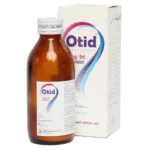
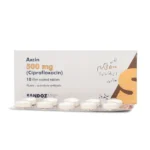
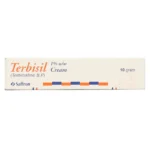
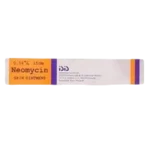

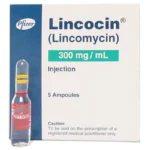
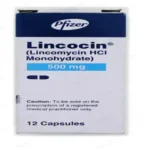

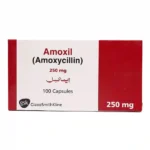
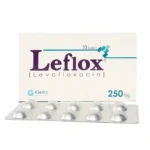

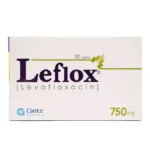
Add a Comment